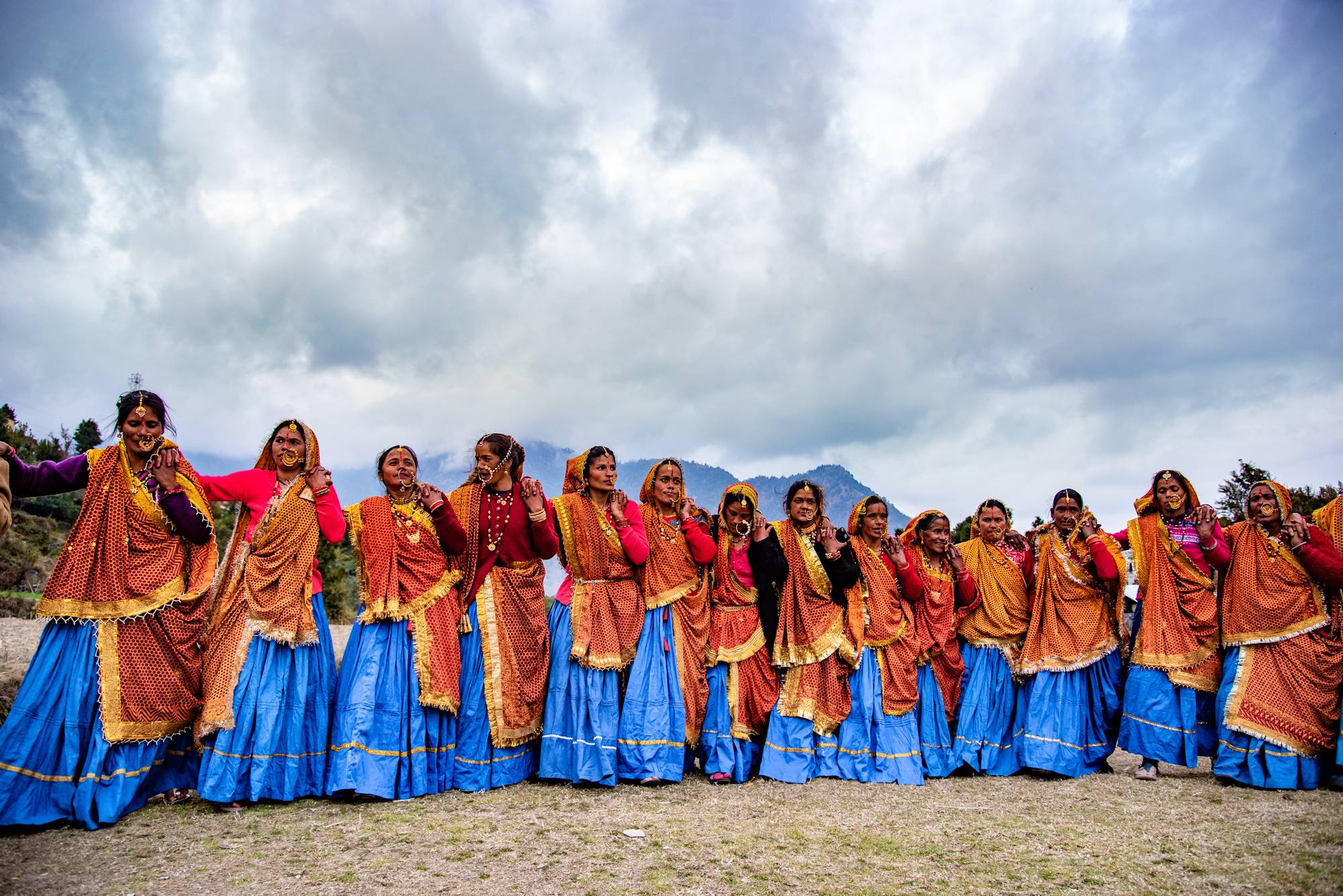The local dress of Uttarakhand reflects the cultural diversity and traditions of the region. The traditional attire varies across different communities and geographical areas within the state. Here are some of the notable traditional dresses of Uttarakhand:
- Garhwali and Kumaoni Dress (Women):
- Ghagra: Women often wear a ghagra, which is a long skirt made of colorful fabric, typically embellished with intricate embroidery or traditional motifs. It is paired with a blouse called choli or pichoda.
- Kumauni Pichora : Women also drape a colorful Kumauni Pichora (dupatta) over their shoulders as a part of their traditional attire. The Kumauni Pichora can be plain or adorned with embroidery or mirror work.
- Garhwali and Kumaoni Dress (Men):
- Dhoti-Kurta: Men traditionally wear a dhoti, a loose cloth wrapped around the waist, paired with a kurta, a long-sleeved shirt. The dhoti is often accompanied by a waistcoat or angarakhi, and a cap or turban.
- Jaunsari Dress: The Jaunsari community, primarily found in the Jaunsar-Bawar region of Uttarakhand, has its distinct traditional dress:
- Ghagra: Women wear a ghagra, similar to Garhwali and Kumaoni attire, but with unique regional variations.
- Topi: Both men and women wear a distinctive cap called a topi, adorned with colorful embroidery and decorative elements.
- Bhotiya Dress: The Bhotiya community, residing in the higher altitudes of Uttarakhand, near the Tibetan border, has its traditional dress:
- Bakhu: Women wear a bakhu, a long woolen robe with vibrant colors and intricate patterns. The bakhu is often paired with a shawl called pichhoda or shang.
- Serkin: Men wear a serkin, a sleeveless woolen coat, along with trousers called suruwal, and a cap or turban.
It’s important to note that modern-day clothing styles have also become prevalent in urban areas of Uttarakhand, with people commonly wearing Western attire. However, during festivals, cultural events, and special occasions, many locals still embrace their traditional dresses as a way to celebrate their heritage and keep the customs alive.


